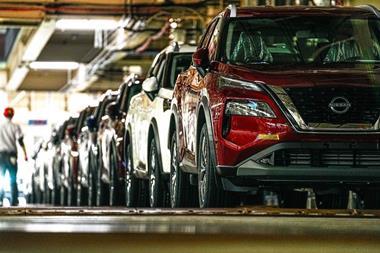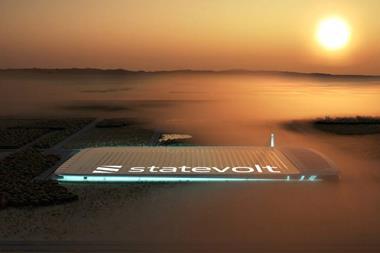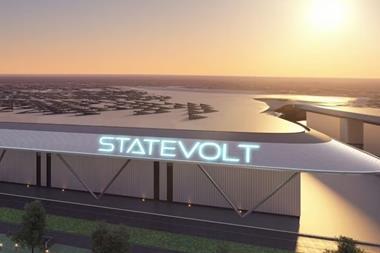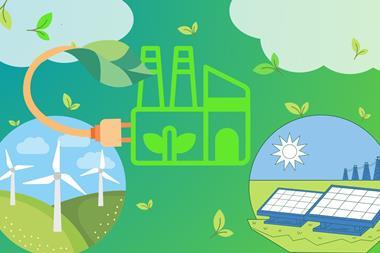The Renault-Nissan Alliance has pursued an ambitious programme of new model launches and volume increases at its Chennai plant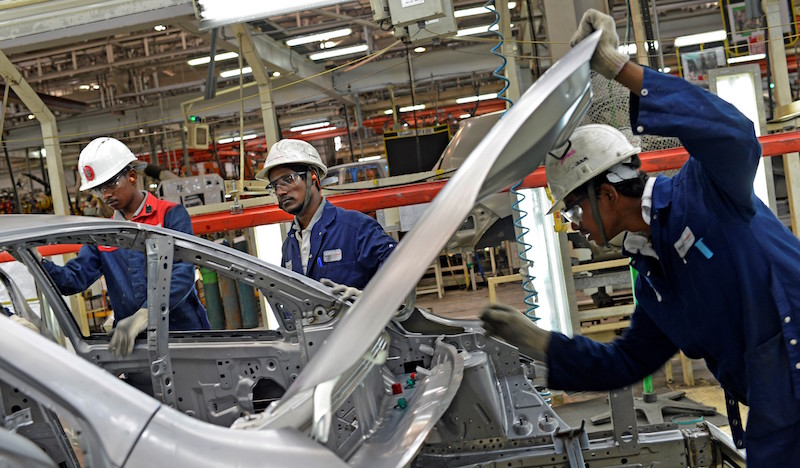 Take one plant add two manufacturers with two engineering philosophies, multiply the complexity with different platforms and variants with high volume targets, and for good measure throw in a couple of new product launches. AMS spoke with Colin MacDonald, CEO & managing director, Renault Nissan Automotive India, to find out how the Alliance plant at Chennai is meeting these challenges.
Take one plant add two manufacturers with two engineering philosophies, multiply the complexity with different platforms and variants with high volume targets, and for good measure throw in a couple of new product launches. AMS spoke with Colin MacDonald, CEO & managing director, Renault Nissan Automotive India, to find out how the Alliance plant at Chennai is meeting these challenges.
AMS: You have added extra shifts to meet demand for the new Kwid and redi-Go models. Has this increased demand had any affect on line speed or other assembly operations?
Colin MacDonald (CM): Our capacity on each line is 40 jobs-per-hour (jph) so operating three shifts on each line, working six days a week means we can produce around 480,000 [vehicles per year]. Our business plan for 2016 is for higher volume than all previous years, so our operational plan will see line one working two shifts at 30jph and line two operating with three shifts – which we have just started – and building up to 40jph. The demand for models produced on line two is greater than for those on line 1, and we have already increased line speed on two so we now need to add more shifts.
We have employed additional people across the plant and we have to be prepared as the need for three shifts might change in the future.
AMS: What is the limiting factor with regard to the jph?

CM: The paintshop dictates the jph we can achieve. It’s restricted by the speed at which we can process the bodies through the coating tanks. We do have two paint lines but we’ve made life more complicated by adding a third body line specifically for the Kwid. It’s an almost completely manual line and this is to meet the challenge of keeping build costs down for this model, as it is targeting a very price sensitive and competitive sector of the market. For it to succeed we need to keep tight control of the production costs.
AMS: Will the Kwid body line become more automated if/when volume increases?
CM: Our strategy has been to ‘start simple’ and this plant has a very low level of automation, but this strategy isn’t any different to how Nissan have set up new plants in other regions, for example the UK. When we started production there it was with a very manual operation, with the gradual introduction of automation to offset the increases in labour costs and volumes. You won’t see AGVs in our plant as they’re not cost effective for this operation.
AMS: You are producing a lot of different models here, how challenging is that?
CM: We produce five different models – plus variants – on each line, which is challenging. At present we are using 14,000 different part numbers and managing this level of complexity is difficult, and because we have very little automation we have to put a lot of time and effort into training. Due to demand on line two we have moved some of the Micra production on to line one (about 10 per hour), but this makes it more complicated to balance the line as there is a lot less work content on the Micra compared to the other models on this line. So from a productivity perspective it’s not ideal, but it was a case of ‘needs must’ to produce the volume.
AMS: Do you move your assembly teams between lines?
CM: We have a team for each shift and for each line, so these teams are rotated in the shift pattern. If we need to change line speed then we will move people across the lines. Any kind of 4M change has to be carefully managed and more so for us because we have such a high level of manual operations. With any changes of this type we have to ensure we maintain the quality of the vehicles produced.
Also the level of demand isn’t flat, we have peaks, mainly due to the vehicles we build for export (100,000 per year) to Europe and the Middle East. These markets have some seasonality [in terms of demand], so it means we’re building a lot of models in varying ratios of volume, which is tough. One of the things we are trying to achieve is more stability, so we want the ratio of models being built to be more consistent over a period of two or ideally three months.
AMS: Does this complexity of model build and variation of demand result in more down-time on the line?
CM: For sure it’s one of our biggest challenges. The complexity and variability in demand is difficult for our suppliers and us, for example we don’t have a single supplier for the door trims and seats; these are spread across a number of different suppliers for different models, so they also have to manage the varying demand.
One of the things our purchasing team are trying to do is create some rationalisation in the supplier base.
“We produce five different models – plus variants – on each line, which is challenging. At present we are using 14,000 different part numbers and managing this level of complexity is difficult” – Colin MacDonald, Renault-Nissan India
AMS: Is the focus on the domestic market or is the drive to create an export hub?
CM: If you look at most of the OEMs who have set up here, it has taken most of them about 15 years to establish themselves in this market. Renault and Nissan have very ambitious plans to do this in a much shorter time span, however, it’s taking us longer than planned and that’s possibly because we didn’t fully understand the Indian consumer.
One of the key learning points has been the need to regularly refresh the models in the range to maintain consumer interest. In the European market we might do a vehicle facelift every two years, and a significant change every five years. So the expectation is very different in India and the consumer is happy to change brands. Established brands like Maruti Suzuki, and more recently Hyundai, have a very strong foothold in this market and are still growing their market share at the expense of some of the smaller producers. We are challenging that with vehicles like the Kwid, which has proved very popular and really changed the dynamics of its segment. From this there is also the knock-on benefit for the other Renault badged cars.
AMS: Did you make any significant changes to produce the CMF-A platform?
CM: The biggest change was adding the new [Renault Kwid] body line, and we had to make changes to the ‘slings’ carrying the bodies through paint, chassis and trim sections. Another big change was in the powertrain section to build the all-new 3-cylinder engines for these models. This required us to build a new facility on this site. We cast cylinder heads and blocks, complete a lot of machining operations, along with the assembly of engines and gearboxes.
We are using mainly Renault diesel engines (K9K) and Nissan petrol engines. This is one of the synergies of the Alliance and we are now producing K9K heads, blocks and crankshafts in India for export to plants in Spain and Turkey. Also we are exporting cylinder blocks and crankshafts for the Kwid engine (2ASDU), initially to Brazil and in the near future to Europe.
AMS: What is the percentage of local content in the vehicles you produce here?
CM: Our Nissan models are around 80%, the Duster is about 70% and one of the key differences is that Renault don’t localise all of the body-in-white parts, so BIW parts come from Romania for the Duster and Tangier for the Lodgy. The Kwid is the exception to this featuring 98% local content and the Datsun redi-Go has 92% local content, which are very high percentages. This has been to keep the costs down and has been very challenging to get all the suppliers up to speed in terms of delivery and quality.
AMS: As you mentioned earlier, the Alliance plans for this plant are very ambitious and considering the model mix, demand variations, volume targets, new brand launches and supplier development, it must make on-going production operations very complex?
CM: There’s never dull moment! We need to encourage our workers to be more proactive, cross-functional working is not easy. We are unique in the sense of us being the only Alliance plant to produce both Renault and Nissan vehicles, and this means working to integrate both Japanese and French methods and manufacturing cultures; as such there is no pro forma for us to work to.
Probably one of the most significant things I’ve done here is to build a strong management team with [expat] representation from both companies, because we are essentially working in two worlds; each company has its own approach to manufacturing – and there are differences – and we need to have a good understanding of how each works to better integrate our operations. Going forward we want the management team to be predominantly made up of our Indian colleagues. Now we need to pass on the knowledge and experience from our expat team to the local managers, but this is an on-going process.
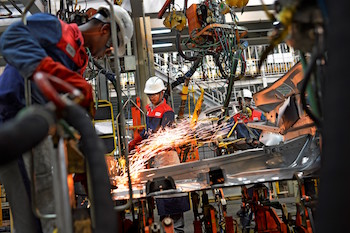 There is a heavy reliance on manual operations
There is a heavy reliance on manual operationsAMS: You’ve highlighted that there are differences in the way Renault and Nissan build cars. Can you explain these differences?
CM: We have created a plant with two production lines both capable of building Renault and Nissan designed cars. The body structures are designed for manufacturing in very different ways, for example the jigs for welding the Renault body parts are much more complicated, so great care has to taken to ensure the body geometries are correct, otherwise problems will occur in the chassis and trim assembly.
In the last few years we have been working to converge these manufacturing functions, in the last 12 months we have converged the process engineering. So in the future new models will be on common Alliance platforms and this should see much more commonality in things like the body structures.
AMS: How do you deal with these differences in assembly operations?
CM: We use a lot of kitting. Fastenings and fittings are different across the brands so we have different tooling and different torque specs. It makes our inventory management quite complicated; we are importing around 3,500 parts from outside of India, with various lead times, so it’s a challenge for our supply chain team.
Since we began [manufacturing] here we have been launching new models and brands, so the process has required developing both the products and production.
Jean-Louis Theron has been brought in from the Renault plant in Russia to help bring the Alliance plant at Chennai up to the standards of efficiency and quality needed for high volume production.
Like many transplants in India the plant is currently underutilised and so there is pressure to manage costs and productivity. Theron pointed out that a lot is expected of what is still a relatively new plant: “Chennai is a young plant and we are still in the process of educating our work force”. He noted at the same time the plant has just launched two new models (Renault Kwid and Datsun redi-GO) though he admits with these launches essentially taken care of, there will be time this year to focus on improving manufacturing operations.
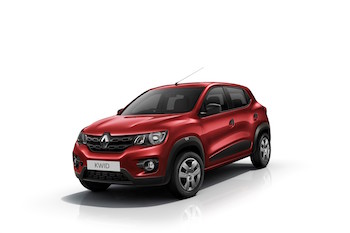 The Chennai plant has added extra shifts to meet demand for the new Kwid
The Chennai plant has added extra shifts to meet demand for the new KwidThis process Theron likens to a roadmap, a series of planned steps that will see measurable improvements in every section of the production process. He notes that progress is already being made with an improvement in the efficiency of the Renault Kwid body line from 60% to a far better 90%.
The new launches bring additional challenges for Theron and his production team as he explains that the initial success of Renault Kwid launch needs to be sustained if it to compete in the longer term in what is a very competitive and volatile segment of the Indian car market. This will require at least two updates of the model each year to hold the attention of India's aspirational car buyers. And updates always add pressure on production and suppliers to react quickly.
Production costs for the Renault Kwid are tight as this is being sold at a very specific price point. When asked about this challenge Theron pointed out that this had been a balance between being designed to a cost and designed to be built. They had looked at areas where savings wouldn't be noticed or impact on the performance of the vehicle. But also investing where potential customers requirements were focussed. Particular focus was placed to ensure the Renault Kwid has good driving dynamics and it’s also powered by the new 3-cylinder engine built at the Chennai plant.































